
International Journal of Thermodynamics
Scope & Guideline
Innovating Thermodynamic Solutions for Real-World Challenges
Introduction
Aims and Scopes
- Fundamental Thermodynamics:
The journal focuses on the principles and laws of thermodynamics, including classical and statistical approaches, emphasizing their theoretical foundations and applications. - Energy Systems and Optimization:
Research on the optimization of energy systems, including renewable energy technologies, heat exchangers, and engines, is a core theme, addressing efficiency improvements and sustainability. - Thermal Properties and Phase Behavior:
The journal publishes studies on the thermal properties of materials, phase transitions, and equilibrium states, contributing to the understanding of thermodynamic behavior in various substances. - Computational and Experimental Methods:
A significant focus is placed on both computational simulations (e.g., CFD, molecular dynamics) and experimental investigations that validate theoretical models and enhance practical applications. - Environmental and Economic Impact:
Research addressing the environmental implications of thermodynamic processes and the economic feasibility of energy technologies is highlighted, reflecting a growing concern for sustainability.
Trending and Emerging
- Renewable Energy Systems:
An increasing number of publications focus on the integration and optimization of renewable energy systems, such as solar and geothermal, showcasing their potential in addressing global energy challenges. - Advanced Refrigerants and Heat Transfer Technologies:
Research on alternative refrigerants and advanced heat transfer technologies is on the rise, highlighting the industry's shift towards eco-friendly solutions and improved energy efficiency. - Energy Storage and Thermal Management:
Emerging studies on energy storage solutions, including thermal energy storage systems, are gaining traction, reflecting the need for effective energy management in fluctuating energy markets. - Thermodynamics in Biological Systems:
There is a growing trend towards applying thermodynamic principles to biological systems, including studies on bioprocessing and biofuels, which indicate a broader application of thermodynamics in life sciences. - Data-Driven and Machine Learning Approaches:
The incorporation of machine learning and data-driven methodologies in thermodynamic research is emerging, providing new tools for analysis, optimization, and predictive modeling in various applications.
Declining or Waning
- Traditional Refrigeration Techniques:
There has been a noticeable decrease in studies focusing solely on traditional refrigeration methods, as the field shifts towards exploring more sustainable and innovative refrigerants and systems. - Basic Chemical Thermodynamics:
Research centered on classical chemical thermodynamics, without integrating modern computational techniques or applications, has diminished, indicating a preference for more applied and interdisciplinary approaches. - Static Thermodynamic Models:
The use of static models that do not account for dynamic or transient behaviors in thermodynamic systems has become less frequent, as researchers increasingly favor dynamic modeling techniques that provide a more realistic representation of processes.
Similar Journals
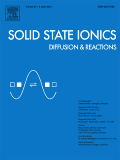
SOLID STATE IONICS
Elevating the science of ionic conduction.SOLID STATE IONICS, published by Elsevier, is a prestigious academic journal dedicated to the field of solid state ionics. Since its inception in 1979, the journal has steadily contributed to the advancement of knowledge regarding ionic conduction in solid materials, which is paramount in a multitude of applications, from energy storage systems to sensor technology. As evidenced by its strong ranking in 2023—positioned in the Q2 quartile across Chemistry, Condensed Matter Physics, and Materials Science—SOLID STATE IONICS is recognized as a vital resource for researchers, professionals, and students alike, providing high-quality peer-reviewed articles that foster scientific collaboration and innovation. Its ISSN is 0167-2738 and E-ISSN is 1872-7689, with an ongoing publication schedule aimed at featuring cutting-edge research through 2024. As an essential conduit for the dissemination of important findings in the field, researchers seeking to publish their work or explore new frontiers in solid state ionics will find this journal an invaluable resource.
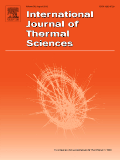
INTERNATIONAL JOURNAL OF THERMAL SCIENCES
Unveiling the science behind heat and matter.The INTERNATIONAL JOURNAL OF THERMAL SCIENCES is a premier academic journal published by ELSEVIER FRANCE-EDITIONS SCIENTIFIQUES MEDICALES ELSEVIER, focusing on cutting-edge research in the field of thermal sciences. With its ISSN 1290-0729 and E-ISSN 1778-4166, this journal has established itself as a crucial resource for scholars and professionals interested in the thermodynamic principles governing engineering and condensed matter physics. The journal is ranked Q1 in both Condensed Matter Physics and Engineering (miscellaneous), highlighting its exceptional quality and influence, as reflected in its impressive Scopus ranks: #32 out of 307 in General Engineering (89th percentile) and #57 out of 434 in Condensed Matter Physics (86th percentile). Researchers and students alike can benefit from the wealth of articles available, with access options designed to foster a wider dissemination of knowledge within the scientific community. Established in 1973 and ongoing through 2025, the journal invites contributions that advance the understanding of thermal phenomena and their applications, solidifying its importance in driving innovation and insight within these dynamic fields.
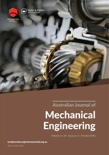
Australian Journal of Mechanical Engineering
Advancing Mechanical Engineering Knowledge for Tomorrow's Innovations.The Australian Journal of Mechanical Engineering is a distinguished publication in the realm of mechanical engineering, dedicated to advancing the knowledge and application of engineering principles within the industry. Published by TAYLOR & FRANCIS LTD in the United Kingdom, this journal has been integral to the field since its inception, featuring a range of peer-reviewed research articles, reviews, and technical notes that collectively aim to bridge theoretical research with practical applications. With an impressive Scopus ranking of #271 out of 672 in Mechanical Engineering, positioning it within the 59th percentile, the journal continues to uphold rigorous academic standards, currently occupying Q3 in the 2023 quartile rankings. Researchers, professionals, and students alike will benefit from its comprehensive coverage and insightful contributions, providing a vital platform for knowledge exchange and innovation in mechanical engineering.
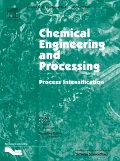
Chemical Engineering and Processing-Process Intensification
Driving Innovation in Process IntensificationChemical Engineering and Processing - Process Intensification is a leading journal published by Elsevier Science SA, specializing in the multifaceted domain of chemical engineering. With the ISSN 0255-2701 and E-ISSN 1873-3204, this journal stands as a beacon of knowledge, facilitating the dissemination of innovative research from 1984 onwards and continuing through 2024. Renowned for its rigorous peer-review process, it boasts a distinguished reputation, reflected in its top-tier rankings within several fields: Q1 in Chemical Engineering (Miscellaneous), Q2 in Chemistry, and Q1 in Industrial and Manufacturing Engineering. This journal focuses on the advancements in process intensification, which are crucial for optimizing efficiency and sustainability in chemical processes. Although access is not open, the journal serves as an essential resource for researchers, professionals, and students alike who seek to advance their understanding and contribute to the evolving landscape of chemical engineering and process technology. Join a community of innovators driving the future of process engineering through impactful and cutting-edge research.

Transactions of the Korean Society of Mechanical Engineers B
Exploring cutting-edge developments in mechanical engineering.Welcome to the Transactions of the Korean Society of Mechanical Engineers B, a pivotal journal dedicated to advancing the field of mechanical engineering. Published by the esteemed Korean Society of Mechanical Engineers, this journal serves as a platform for the dissemination of innovative research and practical applications in mechanical engineering and related disciplines. With a focus on fostering knowledge exchange and collaboration, the journal publishes original research articles, reviews, and technical notes that contribute to the understanding and evolution of mechanical systems and technologies. The Transactions of the Korean Society of Mechanical Engineers B, which has been in circulation since 2007 and spans through 2024, is categorized within the Q4 quartile of mechanical engineering rankings and is indexed by Scopus, making it a valuable resource for researchers and professionals aiming to stay abreast of the latest developments in the field. Although it is not open access, its rigorous peer-review process ensures the integrity and quality of the published work, making it essential reading for academics and practitioners alike.
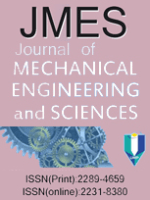
Journal of Mechanical Engineering and Sciences
Exploring New Horizons in Mechanical SciencesThe Journal of Mechanical Engineering and Sciences (ISSN: 2289-4659, E-ISSN: 2231-8380), published by UNIV MALAYSIA PAHANG, is a prominent open access journal established in 2011, dedicated to advancing the field of mechanical engineering and associated sciences. Covering a wide array of topics from industrial manufacturing processes to computational mechanics, the journal serves as a vital platform for researchers, professionals, and students to disseminate innovative findings and methodologies. With impressive Scopus rankings, including a place in the 60th percentile for Industrial and Manufacturing Engineering, the journal holds a significant position among its peers, facilitating global academic discourse. Located in Kuantan, Pahang, Malaysia, the journal emphasizes accessibility and collaboration within the engineering community, encouraging submissions that contribute to both theoretical and applied aspects of mechanical engineering.

FME Transactions
Advancing engineering knowledge for a sustainable future.FME Transactions is a distinguished open-access journal published by the Faculty of Mechanical Engineering, University of Belgrade, that has been making significant contributions to the fields of Mechanical Engineering and Mechanics of Materials since its inception in 2002. The journal holds an impressive Q2 classification in Mechanical Engineering and Q3 in Mechanics of Materials as of 2023, highlighting its critical role in advancing engineering knowledge and technology. With an extensive distribution in both print (ISSN: 1451-2092) and online formats (E-ISSN: 2406-128X), FME Transactions emphasizes high-quality, peer-reviewed research that addresses contemporary challenges faced by engineers and material scientists. Positioned within the 59th percentile of its category in Scopus rankings for Mechanical Engineering and at 54th percentile for Mechanics of Materials, the journal is a go-to resource for researchers, professionals, and students seeking to enhance their understanding and application of cutting-edge engineering principles. The journal’s commitment to open access ensures that its valuable findings are readily available to a global audience, fostering collaboration and innovation in engineering practices.

Processes
Bridging gaps in science with impactful scholarship.Processes is an esteemed open-access journal published by MDPI, dedicated to advancing the understanding and application of scientific principles within the realms of bioengineering, chemical engineering, and process chemistry and technology. Founded in 2013 and based in Basel, Switzerland, this journal aims to foster rigorous research dissemination without the barriers of traditional publishing, making a diverse array of scholarly articles accessible to the global scientific community. With an impressive standing in the academic landscape, Processes is classified in 2023 within prestigious quartile rankings, including Q2 in Chemical Engineering (miscellaneous) and Q3 in both Bioengineering and Process Chemistry and Technology, reflecting its relevance and contribution to these dynamic fields. The journal welcomes submissions that not only present innovative methodologies and experimental findings but also encourage interdisciplinary collaboration and knowledge sharing among researchers, professionals, and students. As of recent metrics, it ranks favorably within Scopus, reinforcing its impact and relevance for ongoing research and development in these disciplines. Explore Processes as a source of inspiration and knowledge for your next scientific endeavor.
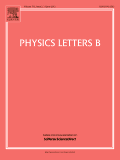
PHYSICS LETTERS B
Unlocking High Energy Discoveries for AllPHYSICS LETTERS B, published by Elsevier, is a leading open-access journal in the field of Nuclear and High Energy Physics, with a notable history dating back to 1967 and a commitment to disseminating high-quality research through to 2024. With an impact factor that places it in the Q1 category, ranking 7th out of 87 journals in its subfield (92nd percentile), it serves as an indispensable platform for researchers seeking to share groundbreaking findings and engage with cutting-edge developments. The journal's open-access policy since 2014 ensures that knowledge is widely accessible, fostering collaboration and innovation within the global scientific community. Located in the heart of Amsterdam, the journal not only supports a vibrant discourse among physicists but also contributes significantly to advancing the frontiers of nuclear and high-energy research, making it an essential resource for researchers, professionals, and students alike who are dedicated to shaping the future of physics.
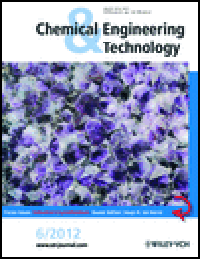
CHEMICAL ENGINEERING & TECHNOLOGY
Shaping the Future of Chemical Processes and TechnologiesChemical Engineering & Technology is a prestigious journal published by Wiley-VCH Verlag GmbH, focusing on the evolving field of chemical engineering and its related disciplines. With an ISSN of 0930-7516 and E-ISSN of 1521-4125, the journal has established a robust platform for researchers and practitioners to share pioneering studies and innovative technologies within the field. Classified in the second quartile (Q2) across multiple categories such as Chemical Engineering, Chemistry, and Industrial and Manufacturing Engineering, it holds an impressive rank in the Scopus database, indicating its significant contribution to the academic community. The journal's commitment to advancing knowledge is reflected in its extensive convergence of research from 1987 to 2024, providing a comprehensive archive of scholarly work. Researchers, professionals, and students benefit from the latest insights and findings, enriching the dialogue around chemical processes and methodologies. Though it operates under a traditional subscription model, the accessibility of this journal is crucial for those engaged in both theoretical and applied aspects of chemical engineering.